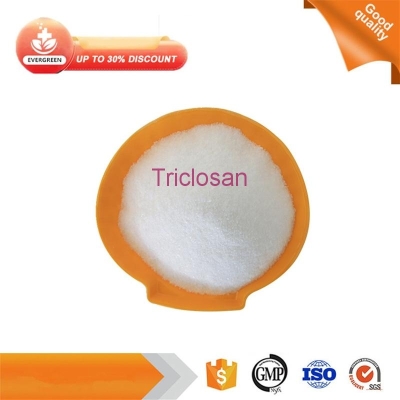-
Categories
-
Pharmaceutical Intermediates
-
Active Pharmaceutical Ingredients
-
Food Additives
- Industrial Coatings
- Agrochemicals
- Dyes and Pigments
- Surfactant
- Flavors and Fragrances
- Chemical Reagents
- Catalyst and Auxiliary
- Natural Products
- Inorganic Chemistry
-
Organic Chemistry
-
Biochemical Engineering
- Analytical Chemistry
- Cosmetic Ingredient
-
Pharmaceutical Intermediates
Promotion
ECHEMI Mall
Wholesale
Weekly Price
Exhibition
News
-
Trade Service
Since the invention of CRISPR gene editing technology in 2012, the field of gene editing has developed exponentially
.
New DNA and RNA editing technologies are advancing with each passing day, bringing disruptive changes to the fields of scientific research, agriculture, animal husbandry, diagnosis and treatment of human diseases, and the discovery of CRISPR also won the Nobel Prize in 2020
In the past decade, human somatic gene therapy products using such gene editing technologies have developed rapidly.
Different gene editing systems are introduced into specific target cells through different delivery tools, and specific genes are changed to cure diseases
.
Dozens of clinical trials are underway, demonstrating evidence in genetic diseases (such as transfusion-dependent b-thalassemia, sickle cell disease, thyroxine amyloidosis, etc.
Leading the way, CRISPR Therapeutics and Vertex plan to submit applications this year for their gene-edited hematopoietic stem cell products for the treatment of transfusion-dependent b-thalassemia
.
To aid in the translation and industrialization of such products from the laboratory to the clinic, on March 15, 2012, the FDA issued a draft guidance on "Human Gene Therapy Products Containing Human Genome Editing", which systematically recommends how to evaluate such genome editing products safety and quality and address the potential risks of these products
The 17-page guideline mainly regulates CMC, preclinical research, clinical research and other issues of gene editing therapy, especially some specific risks associated with genome editing methods, including off-target editing, non-target and off-target editing.
The expected consequences, as well as the unknown long-term effects of on-target and off-target editing, have important guiding significance for the effective and standardized development of human somatic gene editing therapeutic products
.
How to understand the relevant content of the guide, Tongzhiyi invited the vice chairman of Tongzhiyi Cell Gene Therapy Club, and Dr.
Wei Dong, CEO of Boyajiyin, made an analysis and interpretation
.
Wei Dong, Vice Chairman of Tongxieyi Cell Gene Therapy Club and CEO of Boya Jiyin
1.
General considerations for product development
General considerations for product development
When selecting a specific genome editing technology, consideration should be given to the mechanism of action (MOA), the ability to specifically target DNA sequences, and the ability to optimize genome editing components to increase efficiency, specificity, or stability
.
Genome editing can lead to unintended insertions or deletions of DNA, with unintended consequences
It is recommended to consider the degree of genomic modification required to achieve the desired therapeutic effect (ie, the therapeutic modification threshold)
.
Clinical data may support a given treatment modification threshold
The delivery method of genome editing components must consider the advantages and limitations of each method (such as the amount of nucleic acid that can be accommodated by the delivery vehicle, the efficiency of targeted delivery, and the persistence and stability of the genome editing component)
.
The longer the persistence of certain genome editing components, such as nucleases, the higher the risk of unintended genome modifications, especially off-target editing and chromosomal rearrangements
2.
CMC recommendations
CMC recommendations
It is recommended to optimize the genome editing components to minimize the possibility of off-target gene modification
.
Editors or target elements can be optimized, as can genome editing components, such as guide RNAs, to inhibit degradation
Genome editing components are considered active pharmaceutical ingredients or APIs when administered in vivo in the form of DNA, RNA, and/or proteins via nanoparticles
.
When a plasmid or vector is administered directly to express the genome editing component in vivo, the plasmid or vector encoding the genome editing component in the final formulation is considered a DP
For late-stage research and marketing authorization, genome editing components must be produced in accordance with CGMP standards (21CFR Parts 210 and 211), with special consideration given to reagent quality, manufacturing process, and control of analytical methods
.
Appropriate testing of each genome editing component is recommended
.
In addition to evaluating each component for sterility, identity, purity, and functionality, additional testing, such as process residue testing, should be included as appropriate
.
An assessment of the stability of genome editing components is recommended
.
All genome editing components (such as lyophilized and reconstituted material, if applicable) should be subjected to stability studies
.
A detailed description of the DP manufacturing process and all process controls, including flow charts and detailed narratives
.
Provide a list of reagents and certificates of analysis used in the manufacturing process
.
For DPs intended to be sterile but not terminally sterilizable, detailed measures to ensure sterile handling should be provided
.
A detailed description of the analytical methods for the DP test plan, including the accuracy, precision, sensitivity, and specificity of the test, as well as controls and reference materials used to ensure adequate test performance
.
DP quality standards should be developed based on starting materials, manufacturing process, desired end product attributes, and preclinical studies.
It is recommended to include potency measures in DP stability studies.
If a surrogate potency test is used, surrogate potency results and GE functional results should be provided correlation data
.
3.
Considerations for preclinical research
Considerations for preclinical research
The selected in vivo research animal species and/or model should demonstrate biological response to the investigational genome editing product or species-specific surrogate product
.
In vivo preclinical safety studies of investigational genome-edited products should, as far as possible, incorporate planned clinical trial elements (eg, dose range, ROA, delivery device, dosing schedule, evaluation endpoints)
.
Study designs should be comprehensive enough to identify, characterize, and quantify potential local and systemic toxicity, onset (ie, acute or delayed) and potential remission, and the effect of dose levels on these findings
.
When POC and/or safety studies do not provide information on an investigational human genome editing product due to differences in genome sequences between animals and humans, alternative genome editing products (e.
g.
, alternative human elements, including genome editing components, promoters, and transgenes of species-specific elements in genome editing products)
.
The scientific justification for the use of the alternative genome editing product should be provided and the biological relevance of the alternative product to the experimental human genome editing product should be established
.
Identify potential off-target sites using multiple orthogonal methods (eg, computational, biochemical, cellular analysis methods) including unbiased genome-wide analysis
.
Analysis should be performed using the target human cell type from multiple donors
.
4.
Considerations for clinical research
Considerations for clinical research
Clinical trial design includes patient selection, effective and safe product administration methods (including data-based dosing, dosing regimens, and treatment plans), adequate safety monitoring, and appropriate endpoint selection
.
Long-term follow-up of clinical trial subjects receiving human genome editing products is recommended to assess clinical safety
.
Study Population: Human genome editing products may have significant risks, and uncertain potential benefits
.
First-in-human trials of such products are usually in subjects with no other or acceptable treatment options
.
Subjects with severe or advanced disease may be more willing to accept the risks of experimental human genome editing products
.
And these subjects may have experienced more AEs or were receiving concomitant therapy, making safety and efficacy data difficult to interpret
.
Therefore, under certain circumstances, subjects with mild or moderate disease progression may be suitable for inclusion in first-in-human clinical studies
.
Dosage and dosing regimen: The delivery and proposed dosing regimen should be supported by comprehensive preclinical data, which may be guided by clinical experience with similar products, including genome-edited or unedited cell or gene therapy products
.
Treatment planning: It is recommended to mitigate the expected risks associated with genome editing products by staggering the enrollment of subjects and specifying time intervals within and between cohorts of product administration of consecutive subjects
.
The staggered interval should be sufficient to monitor acute and subacute AEs before treating other subjects at the same dose, or before increasing the dose in subsequently treated subjects
.
The staggered interval should also take into account the duration of the expected activity of the human genome editing product
.
Monitoring and follow-up: Adequate monitoring of off-target editing and adequate assessment of unintended consequences of on-target and off-target editing
.
The expected and unanticipated long-term effects of on-target and off-target editing are unknown when a genome editing product is administered, and long-term follow-up of at least 15 years after product administration is recommended
.
Special Considerations for Studies Involving Children: For clinical studies involving children where the associated risks are greater than the minimum risk, the Institutional Review Board must review and justify these risks by the expected clinical benefit in children
.
Expectations of direct benefit should be based on evidence (eg, from adults or appropriate animal models)
.
It is recommended to first establish an initial cohort of adult subjects to obtain data on safety and feasibility, biological activity and preliminary efficacy to support the rationality of enrolling pediatric subjects
.
Adolescents were enrolled before younger children and infants were enrolled, depending on the specific disease
.







